Drinking to a Better Future
Mezcal naturally attracts the conscientious consumer, but being a conscientious consumer of mezcal is not easy. Barely a day goes by without hearing of issues of sustainability, or the latest conglomerate buying up a piece of the ever-growing mezcal pie. When a category explodes in popularity at the pace mezcal has, the minor issues of yesterday can be amplified into the crises of tomorrow. The uncompromising cogs of global consumerism are turning, and they may be on a collision course with the spirit we love.
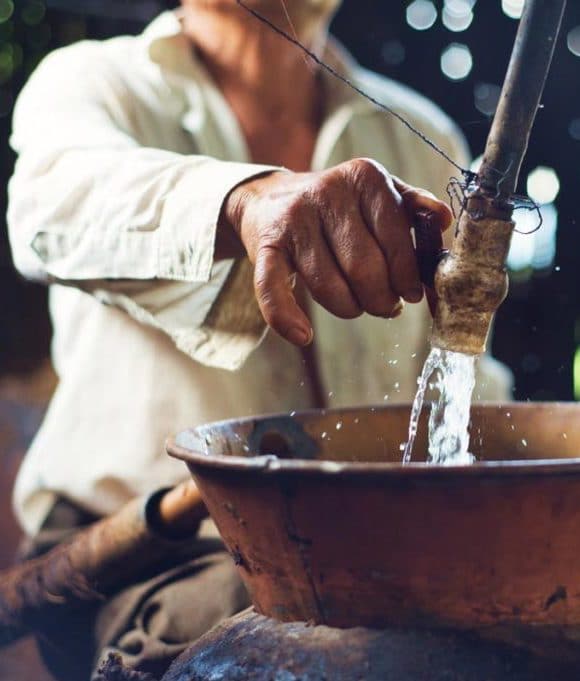
‘Conscientious consumer’ still conjures old stereotypes for me, but the 21st century consumer is waking up to the concerns that were once the monopoly of the tie-dyed few. In boardrooms across the world, sustainability and fair trade practices are moving up the agenda, spurred on by consumer awareness. The drinks industry is no exception, and mezcal is inarguably the category that needs it most.
The past few years have seen an explosion in mezcal sales far beyond the wildest dreams of the once lonesome mezcal enthusiast. Between 2011 and 2018, certified mezcal production has grown from 0.9 million litres a year to 5.9 million – that’s a whipping six-fold growth in just seven years. Not even the relentless gin bubble can compete with that percentage increase. This has attracted the attention of the international conglomerates, with drinks giants Diageo, Pernod Ricard, Bacardi, Proximo (Jose Cuervo), and Davos Brands, either buying or entering distribution deals with the largest mezcal brands. Whilst some may fear the influence these companies may have on the category, many point out that this will bring mezcal to a much wider audience, undoubtedly spurring further growth.
So what can mezcal learn from the mistakes of its more developed, industrious sibling? Can the category grow in a way that is sustainable, benefits the communities from where it hails, and stays true to its traditions? We’re going to explore some problemas muy complicados, and I’m not going to pretend we have all the answers. There may not be answers. But let’s expand the conversation, because informed drinkers are what will ultimately drive the category towards a better future.
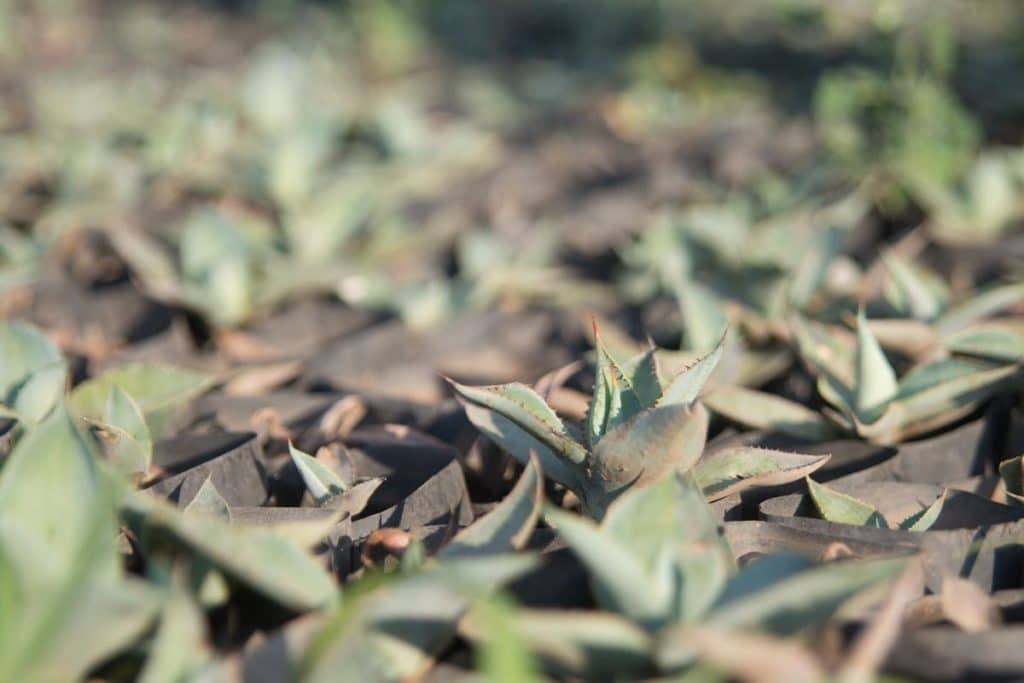
Photo Credit: Anna Bruce Photography
Is my mezcal sustainable?
Before the boom, mezcal had existed for over 400 years with no issues of sustainability. There were plenty of agave and wood to meet the needs of the local communities, and the left over by-products were all but a trickle. But now that it’s moved from small town markets to the huge global market, we’re hearing a lot more about some very serious issues facing the category. Unfortunately we’re not hearing as much about the immense effort currently underway to combat these problems. The tired old stereotypes ageing Top Gear presenters perpetuate are far from the truest. As anyone who has visited a mezcalero will tell you, these are hardworking people who have an ethos of planning for the future, which goes hand in hand with issues of sustainability.
So let’s break it down into the three major issues. If I was sitting in a marketing office, I would come out with some ridiculous acronym, like a Mexican WAVE: Wood + Water + Agave + Vinaza = Environment.
W is for wood, because that smoke don’t come from nowhere. Wood heats the pit ovens which cook the agave and give it its famous sabor, and fires the stills. Mexico is often generalised as a desert landscape, and people often assume mezcaleros are wildly hacking down the few trees with reckless abandon. But in reality Mexico is one of the most climatically varied countries in the world and, in the higher climes, home to vast forests. Furthermore, Oaxaca has world-leading sustainable forest management programs, run by local indigenous communities. This means vast quantities of certified, sustainable wood can easily be purchased by growing producers.
“The harvesting of wild agave garners the most concern, as the market has grown an appetite for the species not historically cultivated.”
Undoubtedly, smaller producers in more remote locations do cut down trees themselves, but under the old ejido system (use of communally owned land for agriculture) there are social pressures from the community to replant what is taken.
Of course there is also a carbon footprint with burning wood to consider, although this is a much wider global issue towards which mezcal contributes only a tiny fraction. Burning wood plays a crucial part in the flavour of mezcal, so for the foreseeable future skipping it in the cooking process will prove a step too far for traditional producers. But heating the stills with cleaner options, such as natural gas, is something we will undoubtedly see from the larger producers in the coming years, already implemented by some such as Sombra. But rolling this out among smaller, more remote producers would be challenging.
A is for Agave, the hardy succulent from where it all begins. Mezcal uses dozens of varieties, some cultivated, some wild, and more are increasingly semi-cultivated.
The harvesting of wild agave garners the most concern, as the market has grown an appetite for the species not historically cultivated. Particularly under threat is the small and highly priced tobala, and increasingly the slow-maturing tepeztate. Furthermore their scarcity, as well as their deliciousness, has inflated the prices, increasing their allure.
But the response has been huge, with agave nurseries and replanting projects across Mexico, replanting not just wild varieties in Oaxaca, but the cupreata of Guerrero and Michoacan, and the maximiliana of Jalisco’s sierras, just to name a few. It’s much more challenging than working with cultivated varieties such as espadin (Agave angustifolia) and the famous blue (Agave tequilana Weber var. azul), as the many wild agaves cannot reproduce asexually via “hijuelos”, tiny little plants that form from the base of their mother, but thankfully they can be semi-cultivated. This involves harvesting the seeds of a flowering plant, caring for them and, once they’re ready, replanting them in a suitable spot.
Of course, there are some unscrupulous producers harvesting wild with little regard for the long term, but the CRM (Mezcal Regulatory Council) have now made steps against this, making producers log every agave that they will use for mezcal. A bureaucratic nightmare say some, but an environmental safeguard nonetheless. Hippocrates Nolasco, President of the CRM says:
“This growth forces us to be more responsible, and in 2018 CRM began to audit those who make use of Wild Maguey to make sure that they have activities related to sustainability. Although we still have a long road before us in this area, these efforts, which the great majority of mezcal producers have fortunately joined, are already producing transcendent results.”
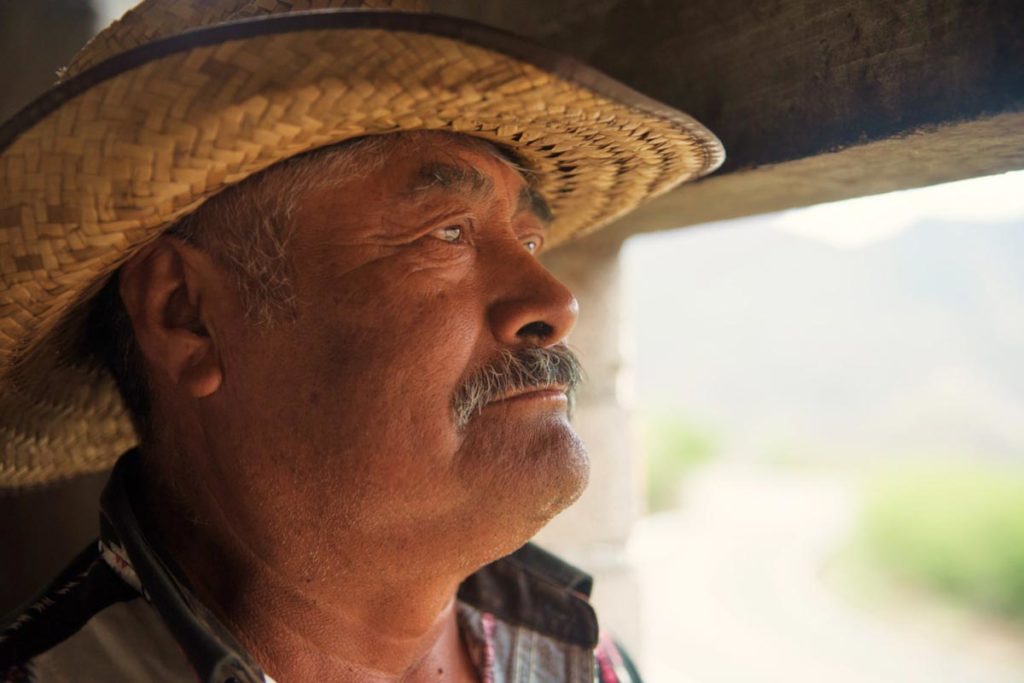
Photo Credit: Anna Bruce Photography
Some purists are sceptical that the flavour will be as good as when they grow au natural, particularly tabala that thrives on the side of rocky cliffs and crags where the quicker growing competition can’t cling on. Agaves in a field will undoubtedly taste different, but sustainability must be the priority.
Wild agave are not the only ones under threat. If you hear about an agave shortage, it’s almost always about Mexico’s most highly cultivated varietal; the blue agave of the tequila region. Although the main reason is economic, a narrow gene pool has exacerbated the issue, making it susceptible to outbreaks of disease. The problem lies in the way the agaves have been cultivated over many decades from the genetically identical hijuelos. Growing this way saves two years when compared to growing from seed, and it means the mother doesn’t flower, so momma can make mezcal. Pollinating animals such as bats and moths lose out on their dinner too, which has pushed some species to the brink of extinction. Although most of the tequila industry have still not fully woken up to these issues, a few more forward-thinking producers are acting where the authorities have failed. With help from conservationist Rodrigo Medellin, AKA The Batman of Mexico, bat-friendly tequila is now a thing.
Espadin, the workhorse of mezcal accounting for over 75% production, is at risk of the same fate as its close Jaliscan cousin, but has so far been spared as intensive cultivation. Many mezcaleros favour growing from seed out of tradition, saying that although it takes longer, the agave grow bigger and make better mezcal. Anecdotally I have seen many more quiotes (agave flowers) rising high over the fields of Oaxaca than in the DOT region. Mezcal regulators, the CRM, seem to be learning from the pitfalls of their tequila industry counterparts, and have been pushing producers in the direction of growing from seed, including a major feature outlining the benefits in their monthly magazine.
V is for Vinaza, the often overlooked, but most destructive of the environmental issues, and a universal problem for distillers the world over. What is it exactly? It’s the liquid residue left over from the initial distillation of spirits. The Scottish call it “pot ale”, the French “vinasse”, and American whiskey fans will know it’s where the backset comes from in the famous sour mash process.
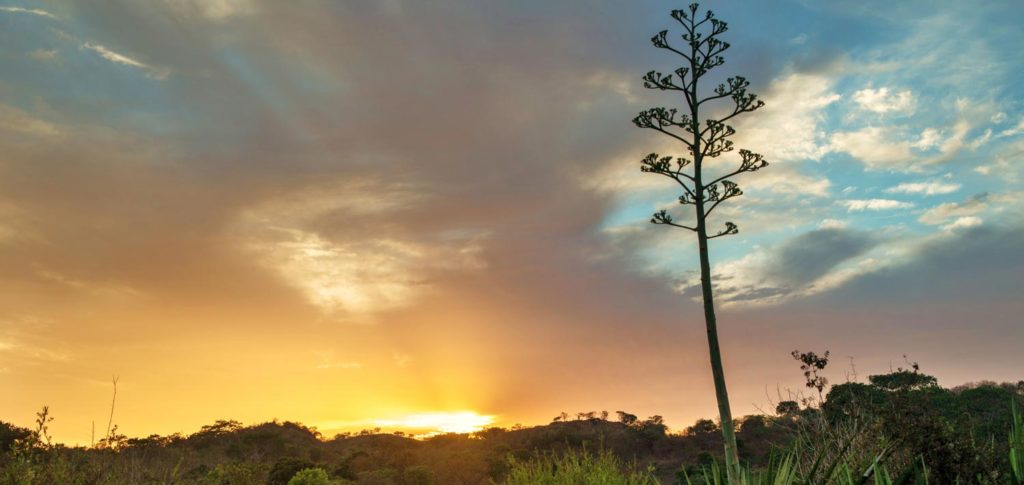
Photo Credit: Anna Bruce Photography
The latter will tell you it is indeed acidic, typically with a PH of around four, and here’s where the main problem comes in. If you discard it in large quantities, it ends up acidifying water sources. It also has a high chemical oxygen demand, which means it sucks oxygen out of water, killing the life that call the rivers home. In small quantities there’s not much threat, but for every litre of spirit you’re left with around 10 litres of vinaza so, as volumes boom, the problem does too.
Mike Morales’ 2013 book, “Vinaza; The Tequila Industry’s Dirty Little Secret”, really illustrates the acute environmental destruction created by the wild dumping of huge volumes of vinaza in Jalisco, but what is the mezcal industry doing to avoid a similar fate?
Surprisingly, the answer has come from architecture. Alejandro Montes Gonzalez and his company COAA came up with a novel way of dealing with both vinaza and bagazo (left over agave fibres) at the same time. Initially working with Real Minero Mezcal in Santa Catarina Minas, he combines the two by-products with earth to make adobe bricks, not only dealing with the problem but also creating a much-needed building resource. As vinaza is a much greater problem in large quantities, the larger producers such as Del Maguye, Sombra, and Quiquiriqui, as well as other producers in Santiago Matatlan, have come on board.
So when it comes to sustainability, we shouldn’t rest on our laurels or downplay the threat, we should celebrate the response. Although do bear in mind the larger brands often have the ability to shout the loudest about their sustainable practices, while many smaller brands are making great strides but lack the marketing resource to let us know.
What can we do? We ask producers questions about where their wood is coming from, what they are doing to repopulate wild agaves, whether they are growing cultivated varieties from seed or at least letting a proportion of the agaves flower, and where the final destination of their vinaza is. By doing this, we can find out who’s doing something, and at the same time make it a priority of the ones who aren’t. We can also look to other states of mezcal denomination where volumes are still very small. Oaxaca makes the lion’s share of mezcal at just over 92% of certified production, so there is much more capacity to expand sustainably in regions beyond its borders.
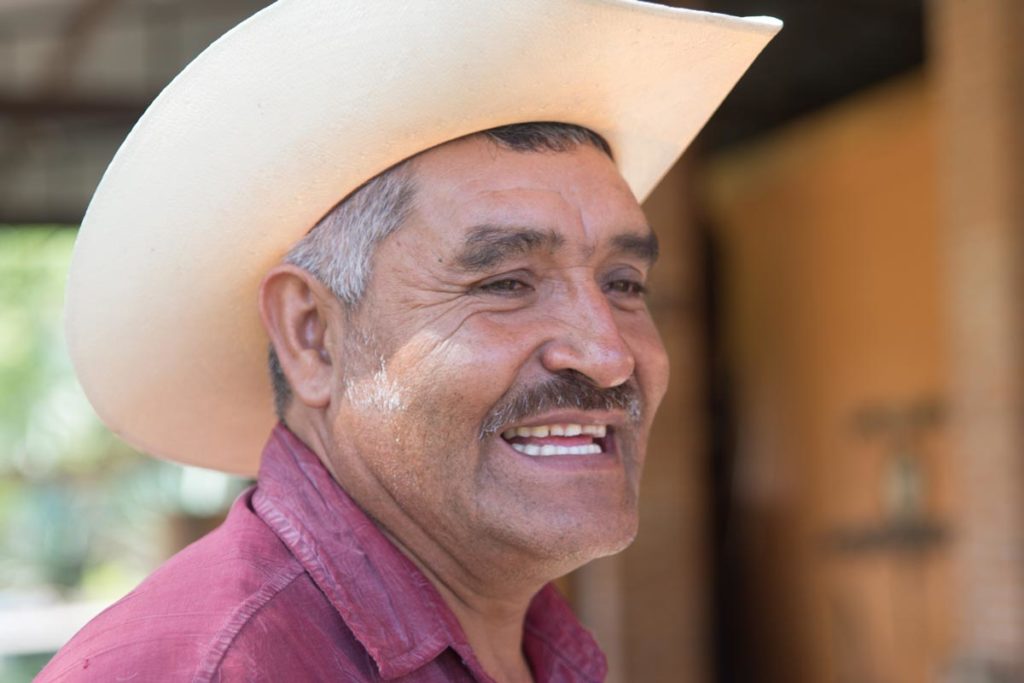
Photo Credit: Anna Bruce Photography
Are the people who make my mezcal traded with fairly?
Along with the booming volumes, the economic value of mezcal in Mexico rose from two billion pesos in 2015 to five billion (£200million) in 2018. That’s a lot of pesos. But is this getting back to those who bust their gut making mezcal?
Nine times out of 10 the brands we know are not owned by the mezcaleros themselves, but by intermediaries – AKA independent bottlers. Why is that? Creating a brand and exporting it successfully requires sizeable start-up investment, far out of reach of the vast majority of traditional producers. The responsibility lies with these brands to judge how much they pay for mezcal, and manage the relationships with the producers.
“The good brands tend to talk passionately about their respect for their producers and families they work with, and you can get a feel for whether it’s genuine.”
Most of the brand owners are in the mezcal business because they have a great passion for the spirit and respect for those who make it. But, with the huge growth of the category, it is attracting the more unscrupulous and, unfortunately for consumers, we have no concrete way of knowing if they are trading fairly. There is not yet any Fairtrade accreditation for mezcal. There is also no agreement of what constitutes fair, as the price is often tied to quality.
So what can we do, if anything, to tell the good from the bad? Reputation goes a long way, and you can talk to industry insiders who know not just the brand owners but also the mezcaleros. Talk of not paying well often spreads quickly, but do bear in mind not all rumours are true. We can also speak to the brands directly, and hear what they have to say. Although they likely will not tell us if they are trading unfairly, the good ones tend to talk passionately about their respect for their producers and families they work with, and you can get a feel for whether it’s genuine.
Another clue is whether a brand is switching producers regularly. Some brands that don’t pay fairly will play mezcaleros off each other, or the relationship breaks down due to bad business practice. The brands that have long relationships with their mezcaleros tend to be the ones trading fairly, and many see it as more than just a business transaction. Esteban Morales Garibe, owner of Derrumbes Mezcal and La Venenosa Raicilla says:
“We treat the producers as a partnership in the business. We go through all the costs – marketing, bottling, labelling, transportation, taxes, importer and retail mark ups – so they understand all the steps that the mezcal goes through to be in front of the customer, and understand if they charge this many pesos, why it will cost $80, or £60 on the shelf. They are always kept informed about how much money is being made.”
“Overall, the category supports more jobs per bottle than any other spirit due to its handmade nature, supporting well over 26,000 families.”
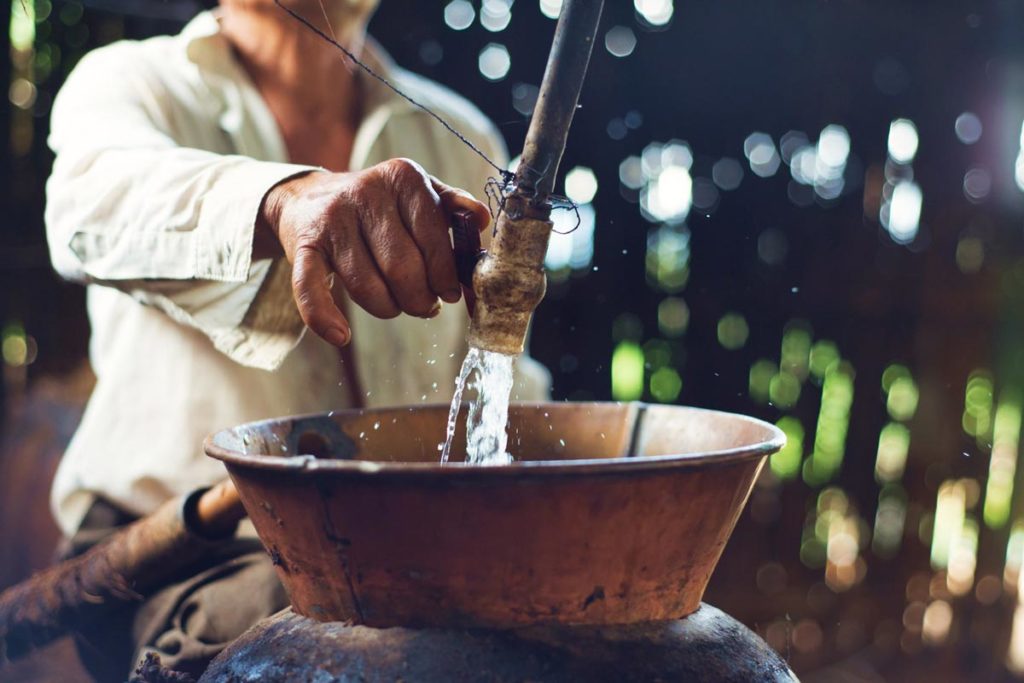
Photo Credit: Anna Bruce Photography
The other way to be sure is by finding out whether the brand is owned by the mezcaleros themselves. A growing number have managed to take their destiny into their own hands, launching their own international brands, including Real Minero, Los Javis, Tosba, Rey Campero, the Cortes family (Nuestro Solidad and el Jolgorio), and Mezcal Koch. Although technically the latter two also bottle other mezcaleros mezcal, they are doing this in a manner based on cooperative values. Self-organised cooperatives of producers, such as Sanzakan in Guerrero, are also being seen as the ideal model for the category.
Overall, the category supports more jobs per bottle than any other spirit due to its handmade nature, supporting well over 26,000 families. The boom has lifted many rural communities out of poverty and hopefully this will continue, but this depends on the way the category grows.
CAN MEZCAL PRODUCTION GROW IN A WAY THAT STAYS TRUE TO ITS TRADITIONS?
Good news! At the moment, consumer demand for traditional mezcal is winning. CRM statistics show industrially produced mezcal makes up just 7% of production in 2018, with 92% of mezcal being made according to the CRM’s Mezcal Artisanal criteria, and a further 1% categorised as Mezcal Ancestral.
But with such substantial growth, industrialisation is a constant threat, and a few large modern distilleries have popped up. Beneva Mezcal, makers of Monte Alban, built a large factory on the road between Oaxaca City and Santiago Matatlan. It’s a gleaming mass of silver metal, complete with autoclaves, and huge stainless steel fermentation tanks and stills. Down the road towards Oaxaca, you will find the even larger Casa Armando Guillermo Prieto, making Zignum, Recuerdo de Oaxaca, and El Senorio Mezcals. Casa AGP is complete with column stills, and the most hated machine of tequila connoisseurs, a diffusor. This piece of equipment crushes raw agave, often along with a solution of sulfuric acid, to extract a raw juice which can be quickly boiled, bypassing the lengthy cooking process of traditional agave spirits.
Critics say this removes most of the characteristics crucial to the very essence of agave spirits. An analogy often used to criticise autoclavs is that the resulting flavour is like cooking a potato in a microwave rather than baking it. Along these lines, the diffusor is like reconstituted powdered mashed potato. I must point out using a diffusor doesn’t violate any rules, although the CRM did attempt to ban it in its most recent round of regulation updates. Reportedly a large legal team representing Casa AGP quickly shot it down.
Advocates for these more industrial distilleries, mainly comprised of their owners and marketing department, will tell you they are more efficient and use less water and energy than mezcal made the traditional way. But critics point out that few would recognise their distillates as mezcal, distorting consumer expectations of flavour. They also add that buying up limited agave stocks to make a spirit that could as easily be made of a less precious resource drives up the price for traditional producers. Finally, they point out this style of production creates far less employment per bottle, concentrating profits away from locals towards shareholders, with the average factory worker in industrial distilleries earning far less than a traditional mezcalero.
Personally, having met many proud mezcaleros, I dread to imagine a future where they must put aside their generations-old traditions in favour of working in a factory.
So what’s the answer for those who start a small brand, work hard, enter a major distribution partnership, sales go through the roof, and find themselves needing more and more mezcal? They want their traditional production process, but also don’t want to blend the mezcaleros whose individual style they have celebrated.
One option is to expand their traditional palenque, creating what some call the mega-palenque. These supersized traditional mezcal distilleries multiply their traditional equipment, essentially using the same process but on a much larger scale. When I visited Paciano Cruz Nolasco, producer of highly successful Del Maguey Vida, in San Luis Del Rio several years ago, he had a significant but modest operation. Then comprising of eight wooden fermentation vats, a tahona, a ground oven, two stills, and no roof, it’s now grown to a whopping 92 fermentation vats, four ovens, 18 300l stills, three electric molinos (crushers), and a large roof! Ilegal’s main producer, Alvaro and Armando Hernandes, is a similar story, and almost as large with 60 wooden fermentation vats, three hornos, two tahonas, and 16 250l stills. Another is Sombra mezcal, who have scaled up their production using traditional equipment, but have also innovated in areas where more sustainable technology with limited impact on flavour can be utilised (such as the aforementioned gas fired stills).
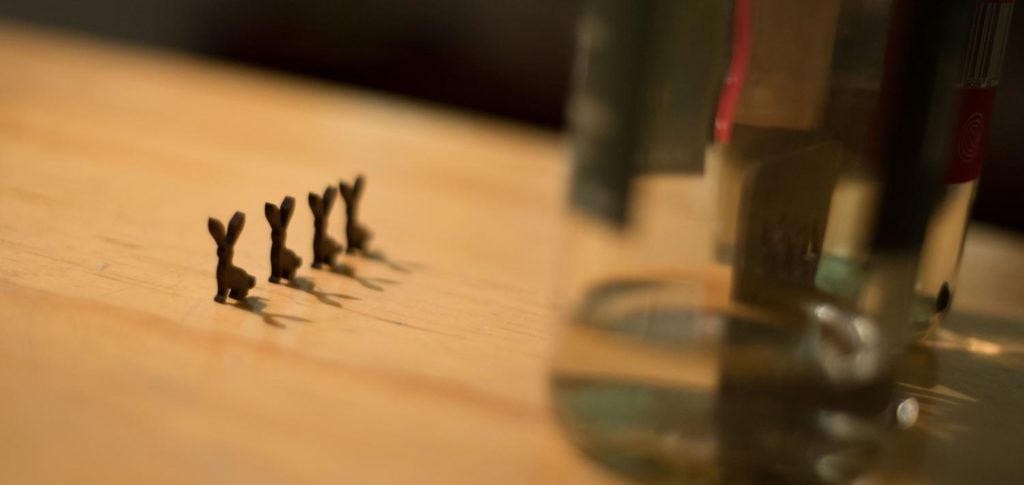
Photo Credit: Anna Bruce Photography
Another option is to work with more producers, but instead of blending them into your bestselling line, you bottle them separately. Ilegal is an example of this, now being made by three different producers for different markets. Melanie Symonds, owner of Quiquiriqui Mezcal, is also considering this option:
“Quiquiriqui is still made by the Mendes family in the same palenque they’ve used for three generations. When we started in 2012 the oven held 10 tons max, now increased to 16, there were six fermenting vats, that’s now 16, and copper stills have gone from one to six, all 350l. All of this growth has taken place at the original site and there isn’t much more that can be added now. It’s important to say this scale-up has been possible without involving other producers. When the time comes that we are using the max the palenque can produce we agreed to look for another plot of land close by and build another palenque – but this would be a new product rather than blending the two mezcals together”.
However sustainable and true to tradition the larger brands stay, some point out that just a few mezcals dominating the category will concentrate the flow of wealth to a smaller handful of enlarged producers. This will be especially evident for those distributed by the multinationals, who have the ability to dominate retail channels.
So where does this leave conscientious mezcal lovers? The success of the brands that have helped build the category should be celebrated, as long as they stay true to their values and continue to make great mezcal. But we should also remember the smaller producers, as varying our consumption across many brands helps spread the benefits of the boom whilst maintaining traditions.
For bars it may also pay off not to be dominated by one house mezcal. As it’s an extremely varied spirit, being able to pick a style suited to the individual cocktails you make will add more variety to your drinks, as well as benefit the small production charm of the category.
WILL THE MARKET DEMANDS ULTIMATELY DECIDE THE FUTURE OF MEZCAL?
We’ve all heard someone say “mezcal is cheap in Mexico, why does it cost so much here?”
It is true that in Oaxaca you can buy the cheapest mezcal from an uncertified producer in a plastic bottle for around £1, but as soon this is from a certified producer it will increase to a minimum of £8. Add in bottling, and this goes up dramatically again, with the average commercial bottle of mezcal in Mexico costing 392 pesos, over £16. Price and quality are cosely linked in mezcal, so if you want the good stuff it’ll cost you, especially for smaller production mezcals, rare agave types, and pechugas.
David Shepherd from Artisanal Mezcal brand Corte Vetusto explains more about the costs of mezcal getting a small brand to the international market:
“UK Duty for a 45% spirit alone is over £8 per bottle, meaning that HMRC makes more money per bottle than us brand owners. Add to that the shipping costs, importer, distributor and retailer or bar/restaurant margin which are significant too, you start to understand how the price ratchets up quickly. Finally we have to market our mezcal with branded material, training sessions, trade shows etc.”
So how does this translate to what we pay in the UK? It’s similar to buying a bottle of wine; there is a huge difference between how much the liquid is worth in a £5 bottle of wine to that of one costing £10. For mezcal, below £35 you will only find factory-made mezcal. Spend a little more and you will get some of the entry-level artisanal mezcals which are great for cocktails, but if you can stretch mid £40s and higher you will really start to find some gems, and the sky is the limit for the rarer small production mezcals. You should get around five times as many servings from a bottle of mezcal as a bottle of wine, so in terms of value they are very similar (this is not the only similarity once you begin exploring the different varietals and regions!).
“For consumers, if you demand cheaper mezcal, that’s what bars and retailers will stock, and mezcaleros will have to either stick to their traditions, compromise their product, or go out of business.”
For the bar trade amongst us, try to give yourself more flexibility with your GPs when it comes to mezcal, as spending a little more will make a world of difference to both maintaining what makes this spirit special, and to the quality of your drinks. Any slimming of margins can be made up in categories where price and quality have little correlation (did someone say vodka?).
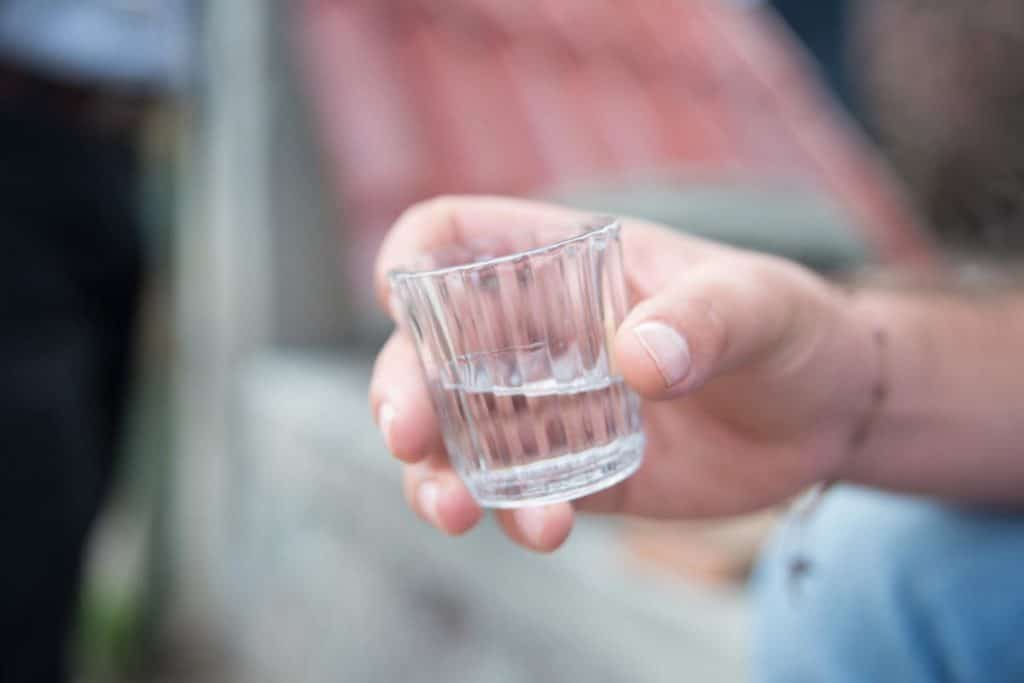
Photo Credit: Anna Bruce Photography
For consumers, if you demand cheaper mezcal, that’s what bars and retailers will stock, and mezcaleros will have to either stick to their traditions, compromise their product, or go out of business. Fair pay and sustainability projects also cost money, so if these are issues you care about, bear this in mind.
I once heard a mezcalero say: “We are not machines, and mezcal is not cheap”, but if the market won’t pay a fair price, then inevitably this man will be replaced by a machine. Mezcal will be shaped by the demands of the market, so you – dear drinker – make the ultimate decision. The future is in your hands.
